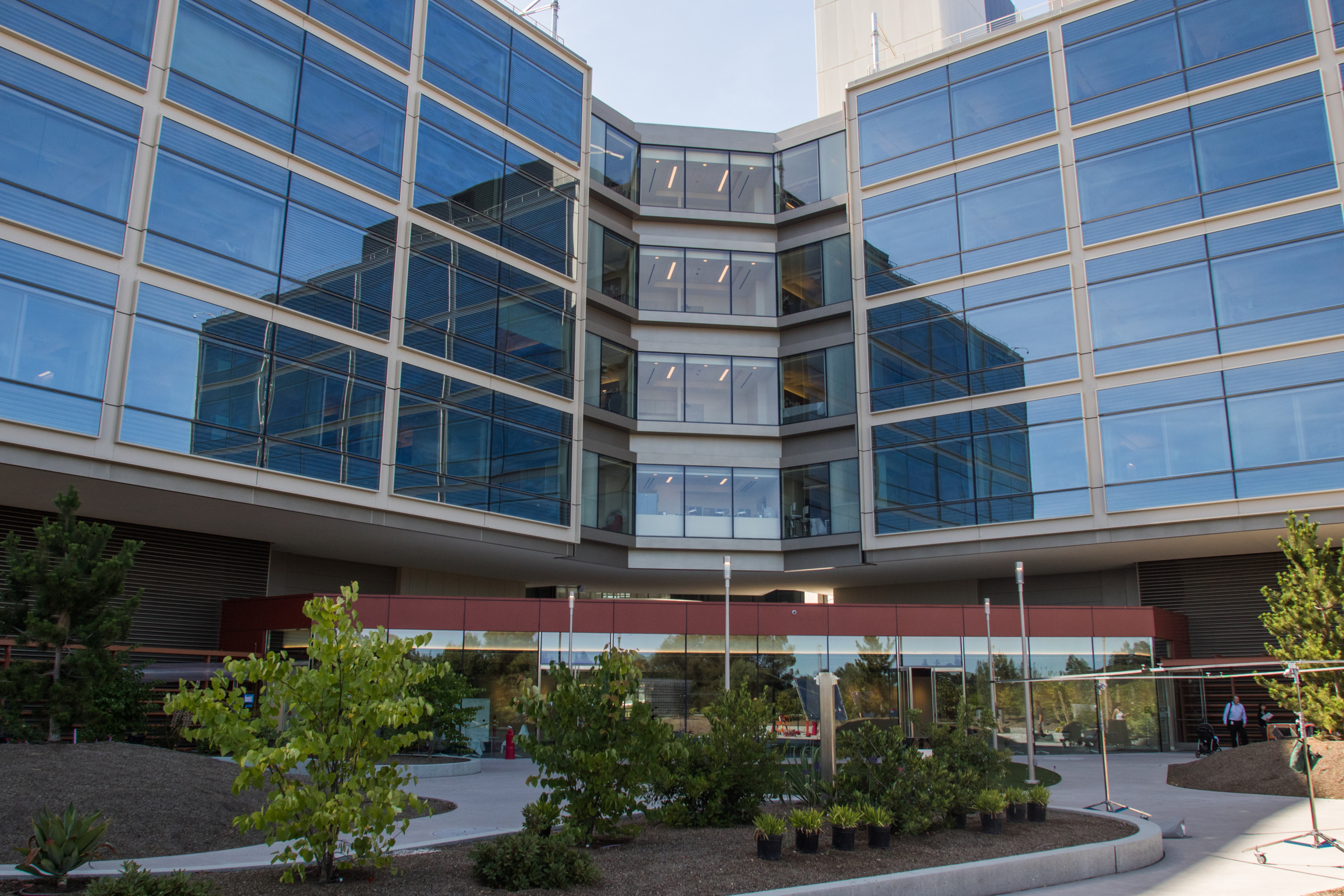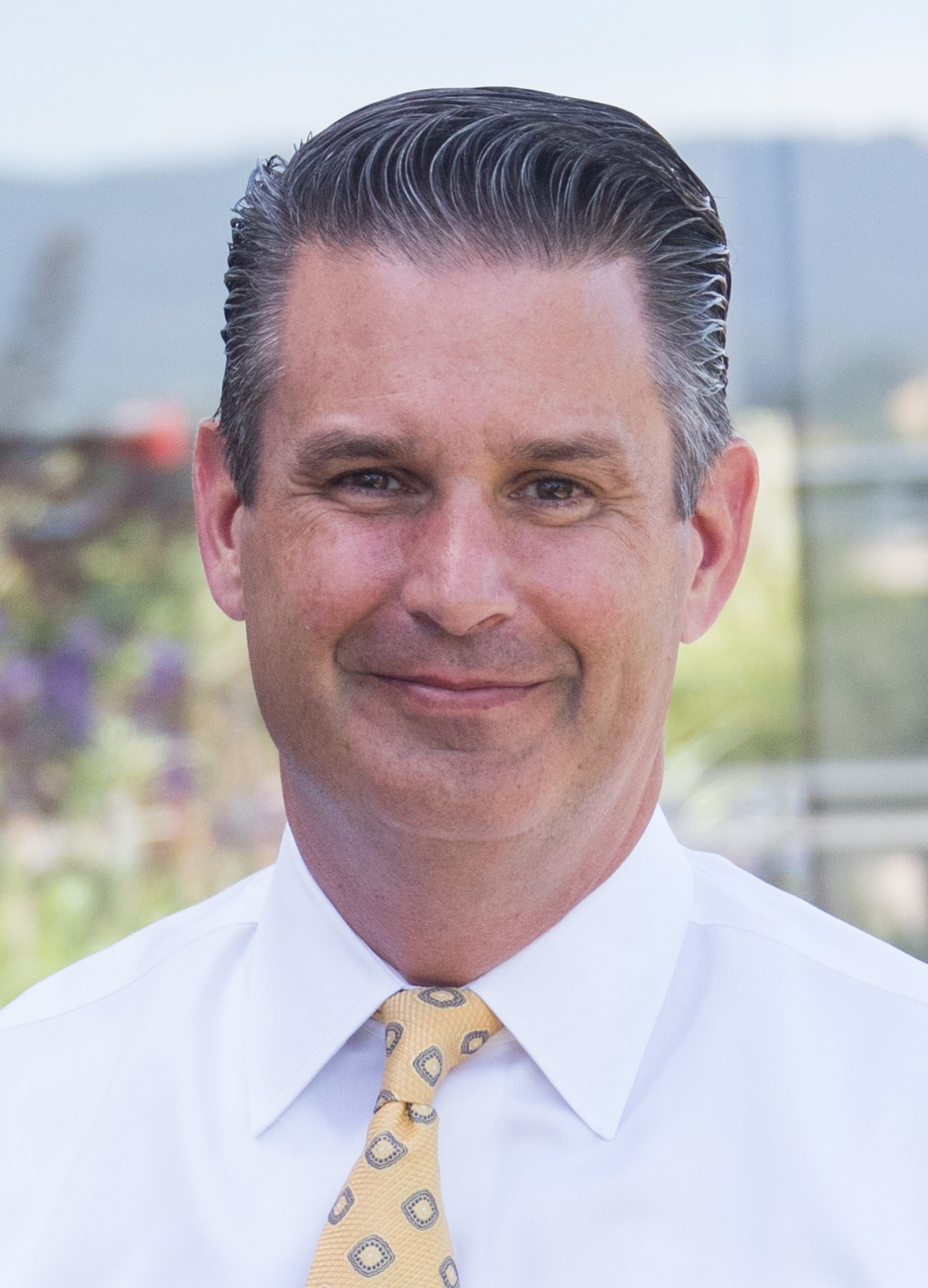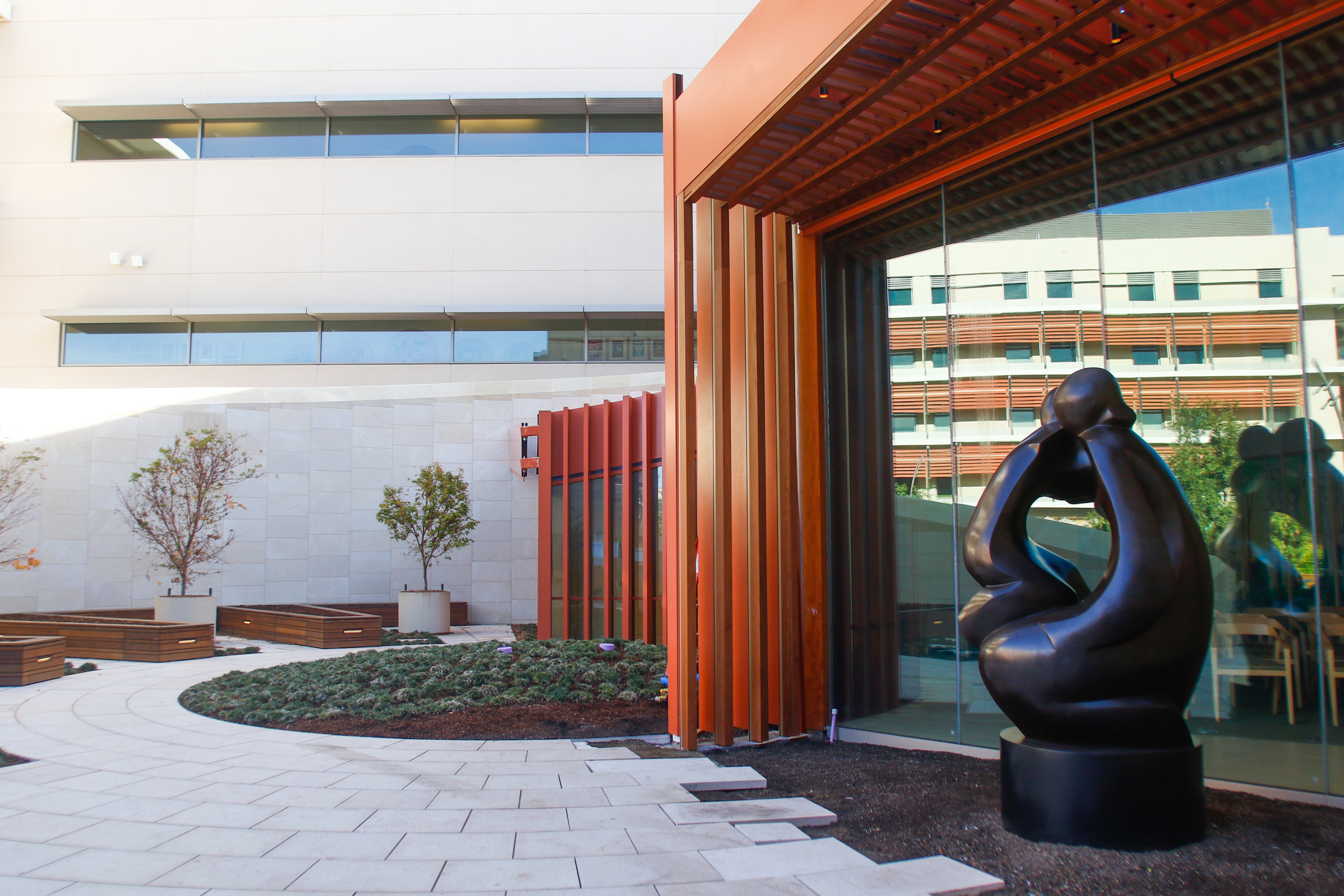When Palo Alto struck a deal with Stanford University more than a decade ago to allow the construction of new hospitals and medical buildings, the university pledged to make sure that its massive project would not bring traffic congestion to city roads.
The 2011 development agreement created stringent measures to ensure that more than a third of the trips to and from the hospitals would be made by alternative modes — including Caltrain, shuttles, carpools and bicycles — by 2025. Under the terms of the agreement, Stanford would have to pay $4 million to Palo Alto if it failed to meet this target.
For a while, the system worked and Stanford saw its share of workers relying on different modes gradually rising. It provided Caltrain Go passes to all new and existing workers, enhanced bicycle amenities and expanded its Marguerite shuttle program to better serve the hospitals.
It also offered a "guaranteed ride home program" for anyone who used alternative transportation and leased parking lots in Santa Clara and Campbell for "park and ride" programs, according to a February report from Molly Swenson, senior project manager for Planning, Design and Construction Department at Stanford University Medical Center.
In 2019, about 33.8% of hospital employees relied on alternate modes of transportation, according to Stanford, surpassing the 33% target laid out in the agreement. (In the six years before that, the rates had ranged between 33.4% and 38.1%.) Stanford was also on a trajectory to easily meet the development-agreement threshold of 35.1% by 2025, having already exceeded that target repeatedly.
Then came COVID-19 and things started moving in the opposite direction. Transit services diminished; riders became more cautious about congregating; and highway congestion dissipated.
Workers, by Stanford's account, began to rediscover their cars. The percentage of riders relying on alternative transportation dropped from 28.8% in 2021 to 19.9% in 2022, surveys that Stanford conducted in May of that year indicated. A survey in May of this year showed the rate rebounding to 25.6% in 2023.
Asking for a break
Given this trend — and its unexpected and unprecedented cause — Stanford is now asking the city for a break. Specifically, it wants to modify the agreement so that it won't have to meet the 35.1% target until 2028, three years later than anticipated. The City Council will consider this request on Oct. 23.
The development agreement, which the City Council approved in 2010 after years of debate, established a sequence of increasingly stringent transportation targets for the hospitals to meet as it gets closer to completing its buildout. This includes a 30% target for alternative mode shares by 2018, 33% by 2021 and 35.1% by 2022.
Stanford University Medical Center made its request to revise these targets in June 2022, a month after its latest commuter survey showed a trend away from alternative transportation modes. The letter cited the program's success and noted that the hospitals have enjoyed a 33% rate of alternative mode shares for seven consecutive years between 2013 and 2019, well ahead of the 2021 target date.
A letter co-signed by David Entwistle, president and CEO of Stanford Health Care, Paul King, president and CEO of the Lucile Packard Children's Hospital, and Robert Reidy, vice president of land, buildings and real estate at Stanford University, cited the persistence of the pandemic, the reduction in transit services and changing commuter habits. While the hospitals were "cautiously optimistic" in 2021 that pandemic would end after the retreat of COVID-19, the pandemic persisted as new variants emerged.
"Public transit systems have continued to operate at reduced levels of service," Entwistle wrote. "And the period of ongoing disruption to pre-pandemic routines has persisted — and has deepened in its effects, as workers who must perform their jobs in person have continued shifting away from alternative modes of transportation."
The proposed amendment would be the first major change in the landmark agreement, which allowed Stanford University to rebuild Stanford Hospital and Clinics (as Stanford Health Care was formerly called), expand the Lucile Packard Children's Hospital, reconstruct numerous buildings at Stanford University School of Medicine, renovate Hoover Pavilion and construct several new medical-office buildings. Upon completion, the project would add about 1.3 million square feet of new development to the city.
In proposing to revise the transportation targets, Stanford noted that the full buildout is now not expected to occur until "well beyond 2025." Swenson informed the city in August 2022 that Stanford has yet to begin the replacement of the 1959 Stone complex.
With the buildings in his complex set for demolition in the coming years, various sections have been mothballed and are no longer occupied. The amount of mothballed square footage, she noted, has doubled from 2021 to 2022 and the figure is expected to more than threefold by 2026, before two of the buildings are fully vacated and demolished.
Given the large amount of unoccupied space, the full impact of the project at full buildout will not materialize well after 2025.
"The proposed delay to alternative mode share targets, therefore, will not result in a misalignment relative to the timing of project buildout, as envisioned when the Development Agreement was approved," Swenson wrote.
Should fines by waived?
If the Palo Alto City Council agrees to change the agreement, the city would forgo the $175,000 in annual payments that Stanford would be required to pay to the city for each of the two years in which it missed its targets, according to a report from the city's Department of Planning and Development Services. (The hospitals would only be required to pay the $4 million lump sum if it fails to hit the target in later years, the report states.)
City staff, for its part, is recommending approving the change. The report notes that if the city does not approve the amendment, Stanford can seek relief in court through the "force majeure" clause of the development agreement, which covers circumstances deemed "beyond the reasonable control" of the parties. This includes events such as earthquakes, fires, floods, riots and terrorist attacks.
"By filing the Development Agreement amendment application, there is an opportunity to create mutual, locally derived implementation clarity regarding present and future compliance with (the development agreement's force majeure clause) rather than taking this topic to a court for resolution," the report from planning staff states.
Staff noted that transportation measures were important because they "required TDM (transportation-demand-management) program implementation to reduce single-occupancy vehicle trips and reduce greenhouse gas emissions."
"This remains true at present," the report states. "SUMC implements one of the most detailed and extensive TDM programs in the city and the proposed Development Agreement (amendment) does not change this."





Comments
Registered user
College Terrace
on Oct 18, 2023 at 7:08 pm
Registered user
on Oct 18, 2023 at 7:08 pm
Gee I wish I could get a 3 year extension to paying my household bills due to COVID 19 — on things like car insurance or my car registration, my utilities or my income taxes or my kids orthodontic bills.
Avoiding for decades building the needed housing on their campus for their students and workforce to ease pocket books and climate burdens . Now asking for the city to approve an extension on paying for their super commuters who can’t find reasonable local shelter to wages near their Stanford jobs. This is so hypocritical.
Registered user
Another Palo Alto neighborhood
on Oct 19, 2023 at 10:40 am
Registered user
on Oct 19, 2023 at 10:40 am
Just say NO. Fines should not be waived. The city will need this money to mitigate additional commuter car trips through our community and keep our community streets safe and efficiently operational in the face of Stanford car trip increases. The city is also struggling under pandemic-related financial losses. (That was the whole point of the fines for failure to achieve your goals. It was the fail-safe measure to protect the city.)
Please note that Stanford is now proposing massive additional growth while offering little in the way of transportation impact mitigation funding contributions for their next round of expansion. Chutzpah! Why should we trust them on the next round?
These transportation mode shift goals were part of the mitigation for the LAST round of growth traffic impacts. Sorry, Stanford. You can afford this. Follow through on your commitment. The University doesn't pay taxes to help the city clean up the traffic messes it makes. This was the deal you made. Live with it. Palo Alto cannot afford to let you walk away from this commitment.
Registered user
Embarcadero Oaks/Leland
on Oct 19, 2023 at 11:04 am
Registered user
on Oct 19, 2023 at 11:04 am
Why should Stanford Med get special treatment and fee waivers when they so obviously care more so little about their agreements and so much more about their non-stop expansion at the expense of the community, medical pros and all their patients! Let's remember the nurses' strike where one of their main complaints was the greedy cutting of all the nurses aides, hurting the nurses and patient care!
For them to use the pandemic as an excuse is outrageous given their conduct during the pandemic. Remember that without warning they evicted all the medical practitioners -- doctors, dentists, lab workers -- at 700 Welsh Road immediately after getting a huge grant to expand children's services in the middle of the pandemic.
This forced the professionals, including my dentist, to camp out in others' offices so they could treat ONLY EMERGENCY patients while they scrambled to find and construct new offices during the pandemic and while they and their patients continue to play catchup.
For well-endowed Stanford Med, the fines are minimal for violations -- $4,000, 000 -- the cost of maybe 2 Palo Alto houses they continue to remove thousands of homes and apartments from the city's housing stock.
Any city worker / planner who supports giving Stanford a break has clearly forgotten who pays his salary!
Registered user
Midtown
on Oct 19, 2023 at 11:37 am
Registered user
on Oct 19, 2023 at 11:37 am
When I worked at Palo Alto Medical Foundation, Stanford workers were found to be parking in the PAMF garage, then taking the Marguerite to their Stanford jobs.
One said "I was wondering when you were going to catch me."
Registered user
University South
on Oct 19, 2023 at 12:43 pm
Registered user
on Oct 19, 2023 at 12:43 pm
You know what reduce congestion on Palo Alto roads caused by Stanford Hospital employees driving to work? More homes in Palo Alto, so they can walk or bike or bus to their jobs.
Registered user
Another Palo Alto neighborhood
on Oct 19, 2023 at 1:25 pm
Registered user
on Oct 19, 2023 at 1:25 pm
My father-in-law was a professor at a highly competitive university in another city. He bought a house and paid property taxes like all the other citizens, contributing his fair share to public coffers for services he received--public schools for his kids, using public streets, libraries, etc. It's fine to give tax protection for land that is specifically used for education--classrooms, labs and the like. It is not fine to give tax protection to land that residential homes of paid professionals sit on and ask the community to provide public school, transportation, and other services at public cost to these SU employees. THAT is a problem. Stanford is private, wealthy institution. It is not my job, as a taxpayer, to subsidize their staff's lifestyle.
It is not ok for Stanford to increasingly use the resources (public schools, streets, etc) of neighboring communities without supporting those resources with tax dollars. No one has a problem with SU professors living in Palo Alto. The problem is Stanford pretending that employees' residential homes on SU-purchased land are educational uses deserving of tax relief. They are not.
Registered user
Embarcadero Oaks/Leland
on Oct 19, 2023 at 1:30 pm
Registered user
on Oct 19, 2023 at 1:30 pm
"You know what reduce congestion on Palo Alto roads caused by Stanford Hospital employees driving to work? More homes in Palo Alto, so they can walk or bike or bus to their jobs."
@Adam, "You know what reduce congestion on Palo Alto roads caused by Stanford Hospital employees driving to work? More homes ON STANFORD;s OWN PROPERTIES LIKE RESEARCH PARK so they can walk or bike or bus to their jobs" -- something Stanford has consistently refused to do while they buy up houses all over Palo Alto.
Did you miss the coverage of the hearings about Stanford's development plans just this week?
"County adopts plan to steer housing toward Stanford campus
Original post made on Oct 17, 2023
After decades of building and buying housing in surrounding cities, Stanford University will now have to look to own campus for future residential growth under a plan that Santa Clara County supervisors approved Tuesday afternoon."
Web Link
Registered user
Old Palo Alto
on Oct 19, 2023 at 4:47 pm
Registered user
on Oct 19, 2023 at 4:47 pm
Agree with online name. Stanford has plenty of empty land and [one of] the largest endowment of any university in the country. [Portion removed.] Time for the city to grow a spine and just say no to any of Stanford's plans that take advantage of Palo Altans.
They can easily afford and have the space to build a small town of Stanford employees with housing that is affordable.
It's long past time to start making demands of Stanford and following through on them.
Registered user
Stanford
on Oct 19, 2023 at 7:49 pm
Registered user
on Oct 19, 2023 at 7:49 pm
Not long ago, Stanford hospital increase their only parking garage fees from $8/day to $14/day. It has 3 floors up and 2 floors down but the parking spaces are not enough for daily needs. All other parking structures are own by Stanford University and has short term and long term parking rates. The most expensive one are $133/month long term rate and next is #40/month which is a bit further. The nearest ones get's filled by 8am or so but for hospital employees that work later than the early 0645 or 7am shift, parking at this lots means you have about 15min walk at least to the hospital. Stanford can easily pay the lump sum penalty for not meeting the agreed conditions. Just do the math on parking fees. But they don't want that. Instead, they increase parking rates. Commuting would make sense for office workers but not for nurses who are required to work odd hours, let alone required to have "on-call" hours which means commuting is out of the question. Who doesn't want to commute? I have tried that but given the commitments required for work, it doesn't make sense. Employees live so far as Tracy or Modesto or Santa Rosa or Monterey because they can't afford housing around here. How do you get this people to commute? They even sleep in their cars.
Registered user
Another Palo Alto neighborhood
on Oct 19, 2023 at 8:09 pm
Registered user
on Oct 19, 2023 at 8:09 pm
Imagine you are a nursing staff member, or a surgeon who has just done a 10 hour shift/surgery and want to go home at 11.30 pm. Do you really want to walk, bike or wait for a bus? Or would you prefer to drive home and get to bed?
Registered user
Adobe-Meadow
on Oct 19, 2023 at 11:09 pm
Registered user
on Oct 19, 2023 at 11:09 pm
When Stanford has broached building housing on campus, the institution has never spoken of designating the housing for the majority of hospital workers. Respiratory therapists, housekeepers, nurses, transporters, kitchen employees, nursing assistants, physical therapists, social workers, lab employees, blood bankers, security, landscapers, maintenance workers, and many more job descriptions, were never intended as eligible for campus housing.
Doctors, professors and students will be considered for the housing, but the vast majority of hospital workers will not be. The Hospital has over six thousand employees who will always continue to commute.
Registered user
Old Palo Alto
on Oct 20, 2023 at 9:34 am
Registered user
on Oct 20, 2023 at 9:34 am
I am a retired nurse now living in Fairfield. I checked out my commuter options and it would take me over 3 hours just to make it to Palo Alto and none of the times listed would work for a 12 hour shift starting at 0645. That simply is not feasible or safe. Living in Palo Alto is not affordable for the large number of nurses, therapists, pharmacists as well as physicians who are providing excellent care to local residents. Creative solutions need to be found but simply punishing the hospital isn’t helpful.
Registered user
Stanford
on Oct 22, 2023 at 6:56 am
Registered user
on Oct 22, 2023 at 6:56 am
Why not raise taxes on every business in Palo Alto?
Yes fine Stanford hospitals, but also make every other business pay $10,000 each - Palo Alto has more jobs than housing. This would create empty land as a bunch of businesses would go bankrupt - this space could then be used to build houses with the money.
Registered user
College Terrace
on Oct 23, 2023 at 12:10 pm
Registered user
on Oct 23, 2023 at 12:10 pm
The word HUBRIS comes to mind.
Registered user
Palo Verde
on Oct 23, 2023 at 9:16 pm
Registered user
on Oct 23, 2023 at 9:16 pm
It is not Palo Alto's job to solve Stanford's problems for them. Stanford should spend its $36 billion endowment on fixing the problems it created, not asking for handouts and concessions from Palo Alto.